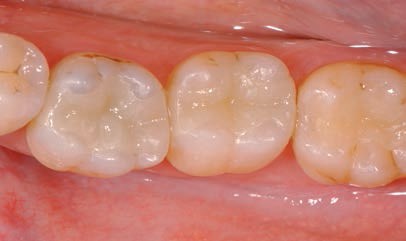A Versatile System for Every Indication – IPS e.max
Want to delight your patients every time? Today they expect much more than the basics of a functional, healthy restorative solution. And with IPS e.max® restorations from DeLux, you’ll be able to deliver.
IPS e.max® is a ceramic material which combines strength and beauty unlike any other dental restorative. It allows you to offer your patients exceptionally beautiful restorations which also demonstrate high mechanical strength. This innovative all-ceramic system opens up a whole new realm of esthetics, with solutions that are proven to provide outstanding results, performance and customer satisfaction.
Get started quickly – download our easy-to-use prescription now!
Features:
- Single system for every all-ceramic indication
- Adhesive, self-adhesive and conventional cementation
- Highly esthetic lithium disilicate (LS2) for single-tooth restorations
- High-strength zirconium oxide framework for
multi-unit bridges - One layering ceramic for combination work
Benefits:
- Highly esthetic and natural appearance
- Long-lasting quality & variety of colors
- One layering ceramic for predictable, consistent shade results, surface gloss & wear properties −
even in combination restorations - Full biocompatibility with the human body
Before:
After:

True Sophistication and Flexibility in Dental Science
As a wide-reaching and flexible restoration system, IPS e.max incorporates many good ideas. The system allows you to select the most suitable all-ceramic material, depending on the indication at hand and the required strength of the restoration.
Lithium disilicate (LS2) is used to fabricate restorations for single teeth in the anterior and posterior regions. The material exhibits exceptional esthetic properties.
The use of a single veneering ceramic offers decisive advantages, especially in combination work. All IPS e.max restorations demonstrate the same wear properties and appearance, regardless of the framework material used.
Lithium Disilicate – Esthetics, Versatility and Strength
The lithium disilicate ceramic (LS2) of the IPS e.max system deftly combines esthetics and strength. This is particularly true in single-tooth restorations, where it yields superior esthetic results, with a flexural strength that is 2.5x greater than other glass-ceramics.
Its indication spectrum ranges from thin veneers (0.3 mm) and minimally invasive inlays and onlays to partial crowns, full crowns and three-unit anterior bridges.
Advantages:
- Lifelike shading for highly esthetic solutions
- Long-lasting restorations due to high strength
- Versatile use and wide range of indications
- Adhesive, self-adhesive and conventional cementation
Before:
After:

IPS e.max® Ceram – Natural Look and Vibrancy
The IPS e.max system features only one layering ceramic, regardless of chosen framework material or combinations. All IPS e.max frameworks are veneered with the highly esthetic IPS e.max Ceram layering ceramic to give restorations an individual character and natural-looking vibrancy.
Advantages:
- One layering ceramic for lithium disilicate and zirconium oxide frameworks
- Predictable shade results, surface gloss and consistent wear characteristics
- Nano-fluorapatite for highly esthetic properties


 Delight Your Patients. Trust DeLux.
Delight Your Patients. Trust DeLux. 